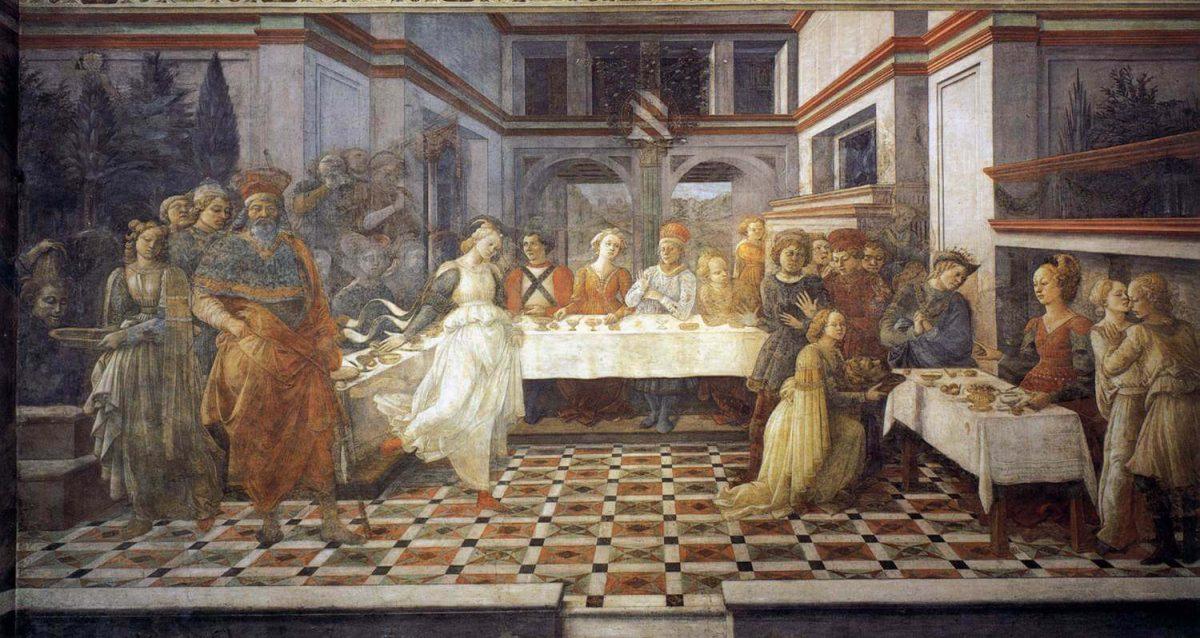
Feast of Herod. The main details of the fresco by Filippo Lippi
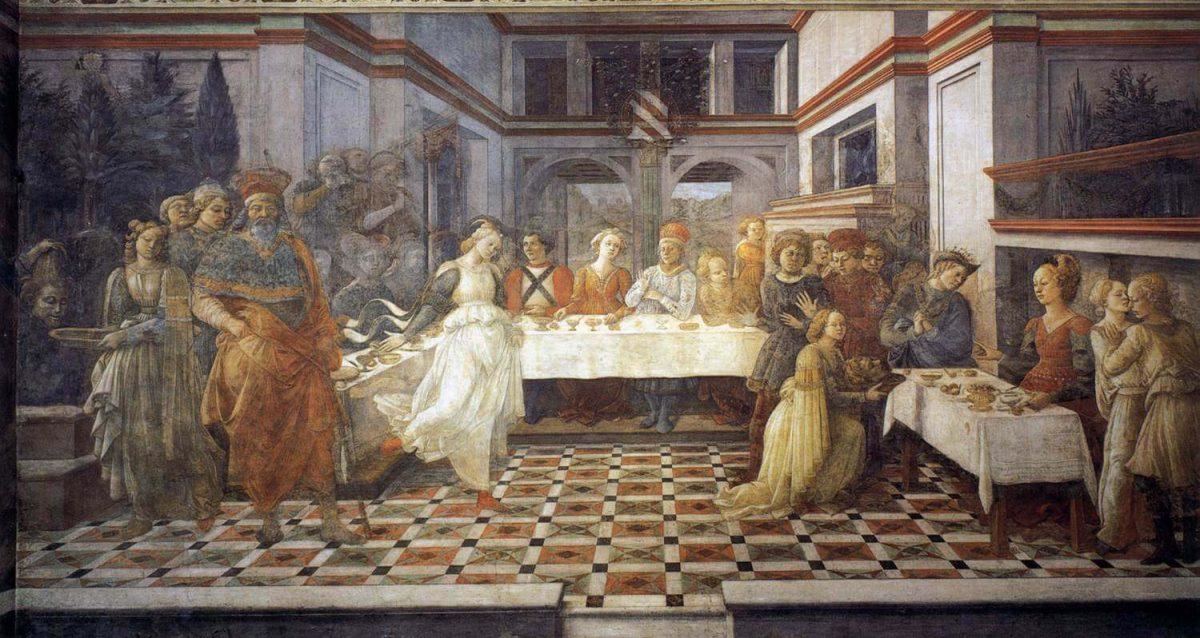
Fresco by Filippo Lippi "Feast of Herod" (1466) is located in the Cathedral of Prato. It tells about the death of Saint John the Baptist. He was imprisoned by King Herod. And one day he had a feast. He began to persuade his stepdaughter Salome to dance for him and his guests. He promised her everything she wanted.
Herodias, the mother of Salome, persuaded the girl to demand the head of John as a reward. What she did. She danced while the saint was being executed. Then they gave her his head on a platter. It was this dish that she presented to her mother and King Herod.
We see that the space of the picture is similar to a “comic book”: three important “points” of the gospel plot are inscribed in it at once. Center: Salome performing the dance of the seven veils. Left - receives the head of John the Baptist. On the right, he presents it to Herod.
By the way, you can’t see Herod himself right away. If Salome is recognizable even by her costume, and Herodias attracts attention with an expressive gesture of a pointing hand, then there are doubts about Herod.
Is this nondescript man to her right in gray-blue robes, who manneredly turns away from the terrible “gift” of Salome, is the king of Judea?
So Filippo Lippi deliberately emphasizes the insignificance of this “king”, who obeyed the orders of Rome and recklessly promised the seductive stepdaughter everything she wanted.
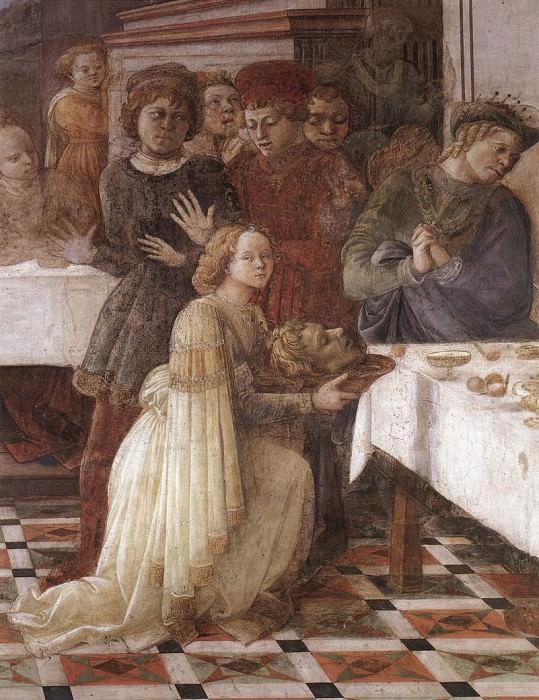
The fresco is built according to all the laws of linear perspective. This is deliberately emphasized by the pattern of the floor. But Salome, who is the main character here, is NOT in the center! The guests of the feast are sitting there.
The master shifts the girl to the left. Thus, creating the illusion of movement. We expect the girl to be in the center soon.
But in order to draw attention to her, Lippi highlights her with color. The figure of Salome is the lightest and brightest spot on the fresco. So at the same time we understand that it is necessary to start “reading” the fresco from the central part.
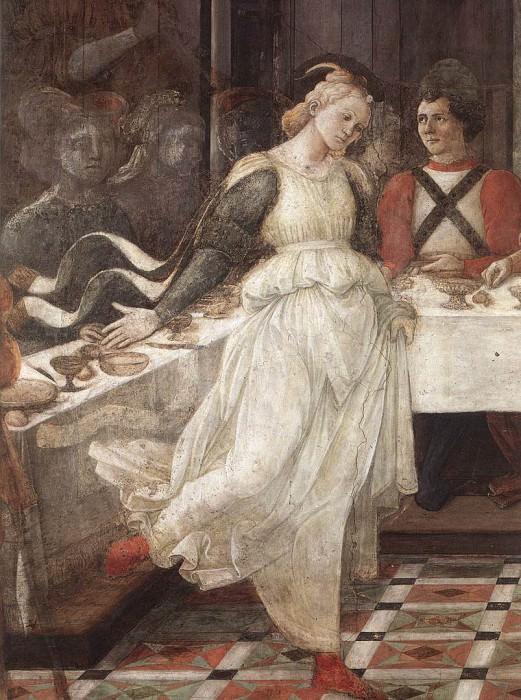
An interesting decision of the artist is to make the figures of the musicians translucent. So he ensures that we are focused on the main thing, without being distracted by the details. But at the same time, due to their silhouettes, we can imagine the lyrical music that sounded in those walls.
And one moment. The master uses only three primary colors (gray, ocher and dark blue), achieving an almost monochrome effect and a single color rhythm.
However, Lippi creates the illusion through color that there is more light in the center. And this is the point in time when it can still be fixed. Young, angelically beautiful Salome almost soars, her sparkling clothes fluttering. And only bright red shoes keep this figure on the ground.
But now she has already touched the mystery of death, and her clothes, hands, face darkened. What we see in the scene on the left. Salome is a submissive daughter. The tilt of the head is evidence of this. She herself is a victim. Not without reason then she will come to repentance.
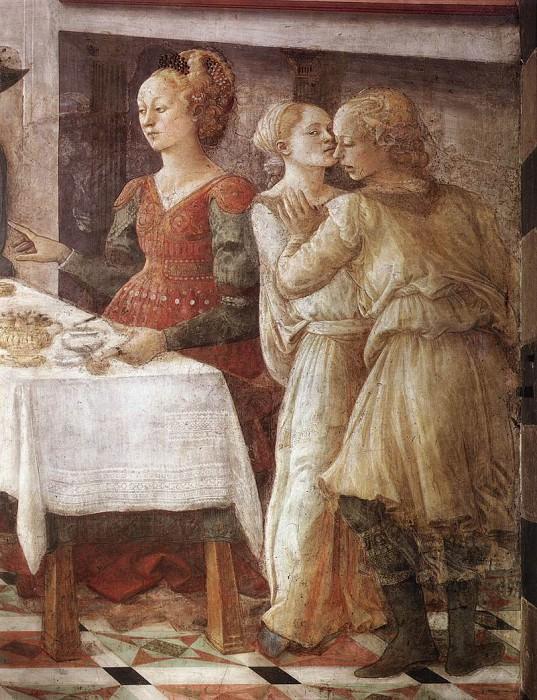
And now her terrible gift amazed everyone. And if the musicians on the left side of the fresco are still playing brass, accompanying the dance. That group on the right already fully reflects the emotions of those present on what is happening. The girl in the corner felt sick. And the young man picks her up, ready to take her away from this terrible feast.
The poses and gestures of the guests express disgust and horror. Hands raised in rejection: "I'm not involved in this!" And only Herodias is satisfied and calm. She is satisfied. And he indicates to whom to transfer the dish with his head. For her husband Herod.
Despite the shocking plot, Filippo Lippi remains an aesthete. And even Herodias is beautiful.
With light contours, the artist outlines the height of the foreheads, the slenderness of the legs, the softness of the shoulders and the grace of the hands. This also gives the fresco musicality and dance rhythms. And the scene on the right is like a pause, a sharp caesura. A moment of sudden silence.
Yes, Lippi creates like a musician. His work is absolutely harmonious from a musical point of view. The balance of sound and silence (after all, not a single hero has an open mouth).
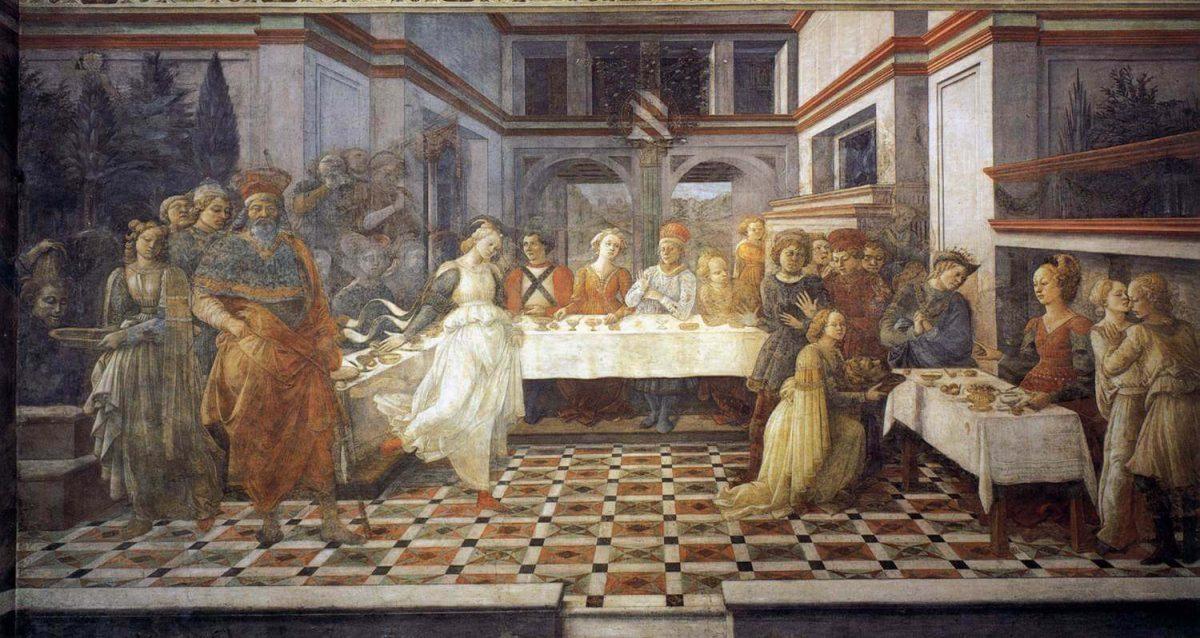
For me, this work of Filippo Lippi has remained completely unsolved. Who is this powerful man on the left?
It's most likely a guard. But you must admit: too majestic a figure for an ordinary servant.
Could it be John the Baptist in glory?
And if Herod, then why is he so great? After all, it is not because of status, and even more so not because of the desire to comply with the laws of perspective, that such majestic features are given to him.
Or maybe the artist is looking for excuses for him? Or, with his silent severity, he accuses all who succumbed to temptations and could not resist. In general, there is something to think about ...
Authors: Maria Larina and Oksana Kopenkina
Online Art Courses
Leave a Reply